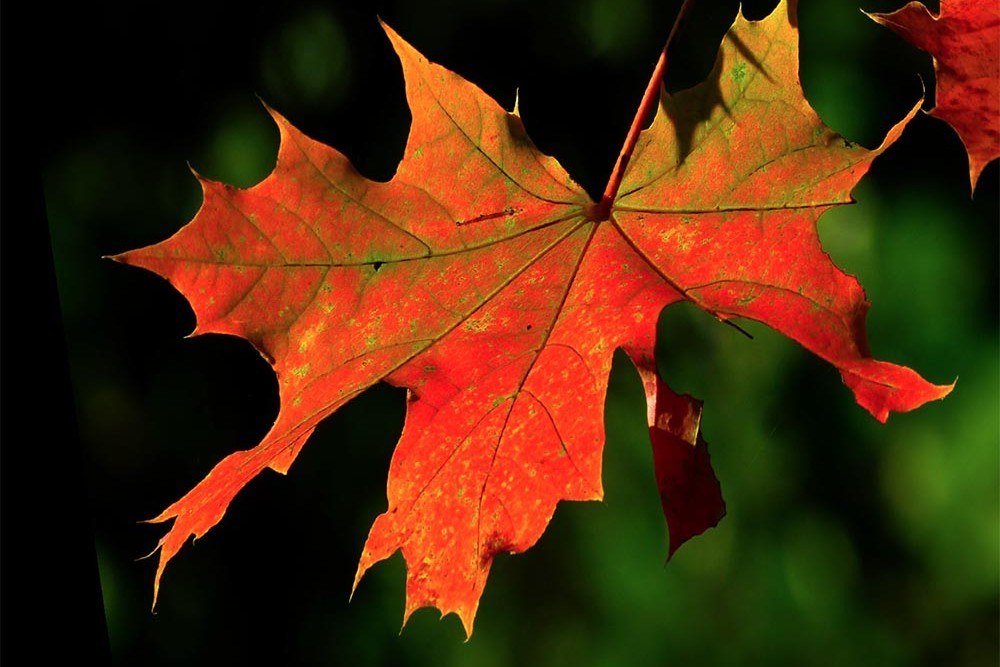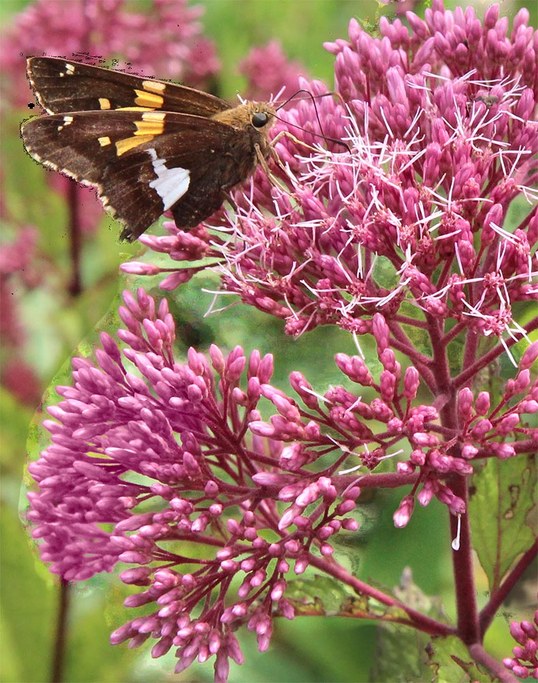The Penn State Extension Master Gardener volunteer program supports the outreach mission of Penn State Extension by utilizing unbiased research-based information to educate the public and our communities on best practices in sustainable horticulture and environmental stewardship.

Statewide Highlights
- 2,748 active Penn State Extension Master Gardener volunteers
- 364 newly trained Master Gardeners
- 200,690 volunteer hours reported for a value of $4,886,801
- 177,163 direct adult contacts
- 64,664 direct youth contacts
Master Gardeners Answer Questions
Master Gardeners maintained a Garden Hotline in 52 counties. They reported 18,793 contacts with people who sought this service via telephone, email, or visits to the county extension office, or at community events. An additional 1,191 questions were answered through the online eXtension system--for a total of 19,984!
Master Gardeners Speak
- 1,023 Speakers Bureau presentations
- 235 radio, TV, or Internet spots
Master Gardeners Write
- 1,144 articles published in newspapers, magazines, or blog
Master Gardeners in the News
- 304 news articles, radio, or TV spots were published about their projects
Master Gardeners Teach
- In 271 schools and 44 youth camps
- Horticulture therapy in 62 special needs communities
- In 182 community gardens
- 414 Poison Prevention Programs to first grade classes
- Providing 407 educational displays at county, regional events, and fairs
Master Gardeners Partner
- 342 community organizations
Master Gardeners Contribute to the Community
- 10,639 pounds of fresh produce donated to local food banks from Master Gardener-led gardens.
Home Lawn and Garden Newsletter
- 17,500 subscribers
Master Gardeners Travel
- In June, Penn State Extension Master Gardeners traveled to northern Italy to explore the gardens of Padua, Verona, and the Lake District.
Statewide Programs
Spotted Lanternfly

photo: Nancy Knauss
The spotted lanternfly (SLF) is an invasive sap-sucking planthopper from southeast Asia, first discovered in the United States in Berks County in 2014. Since then it has populated parts of 13 contiguous counties in Southeastern Pennsylvania and three nearby counties in New Jersey. An additional infestation has been found in northern Virginia, and there have been sightings of SLF in Delaware, Connecticut, and New York.
SLF feeds on over 70 different plant hosts, including landscape trees, grapevines, fruit trees, timber, and hops.
Unlike crop-specific agricultural pests, this creature impacts every resident in areas where its numbers become significant. In addition to the injury caused by plant feeding, SLF secretes an abundance of sugary waste, or honeydew, coating everything beneath its feeding sites. This sugary substrate in turn encourages growth of molds, collectively called sooty mold. The mold coats leaf surfaces, compromising photosynthesis and overall plant health and aesthetics. Sooty mold also coats and stains concrete, decks, outdoor furniture, and other surfaces, with the potential to reduce quality of life as well as property value.
Penn State has become a national leader in research and education on the SLF, working closely with the Pennsylvania Department of Agriculture (PDA) and the U.S. Department of Agriculture (USDA). While researchers are at work on multiple fronts, looking for safe and effective management strategies, Penn State Extension Master Gardeners have been called on to be a conduit for reliable and current information to the public.
This season, Master Gardeners fielded over 4,850 SLF queries on county Garden Hotlines and hundreds more at fairs, festivals, and public meetings all over the state. They presented 119 SLF talks in 23 counties, reaching nearly 3,600 Pennsylvania residents.
In addition, Master Gardeners in six counties, Berks, Delaware, Chester, Lehigh, Montgomery and York, staffed dedicated SLF phone lines to capture calls coming to the PDA Spotted Lanternfly Hotline. The six counties answered 761 queries on these phone lines. Master Gardeners have also assisted Penn State researchers with various field projects to collect important data on SLF.
The future spread of this pest is uncertain, but Master Gardeners across Pennsylvania are prepared to educate their county residents to respond knowledgeably and safely if the infestation reaches them.
Master Gardener Training Manual

The Penn State Extension Master Gardener Training Manual earned several national awards in 2017. The American Society of Horticulture Science (ASHS) Extension Division recognized the publication as the 2017 Outstanding Book. The manual also received the 2017 Media Awards Gold Medal of Achievement for Best Overall Book presented by the Association for Garden Communicators. This national award recognizes individuals and organizations who achieve the highest levels of talent and professionalism in garden communications.
"The GWA Media Awards showcase the writers, photographers, editors, publishers and trade companies that have pursued excellence in gardening communication in print or electronic communications," said Kirk Brown, president of the association. Nancy Knauss, state Master Gardener coordinator; Sue Wyble, a Master Gardener; Jennifer Bair, creative specialist; and Amanda Kirsten, editor, all with Penn State's College of Agricultural Sciences, were the project team members. In addition, they won a Silver Award in the Technical Book category for the same publication.
The Master Gardener Manual is an expansive guide containing a comprehensive inventory of gardening and landscape management topics for home gardeners, students, and professionals. The nearly 800-page guide leads readers through the basics of plant classification, propagation, plant culture, harvesting, and problem-solving.
"We are honored that the Master Gardener Manual received national recognition with these awards," Knauss said. "The project was the culmination of the efforts, expertise and talents of many people. Our goal was to produce an up-to-date, science-based and user-friendly manual for Master Gardener basic training, as well as for home gardeners."
"The GWA Media Award winners have been judged by industry experts and show significant distinction and merits that exemplify exceptional work." ~ Kirk Brown, GWA President
Garden Hotline

photo: Nancy Knauss
- 18,793 gardening questions
- 1,191 eXtension questions
- Total: 19,984 questions answered
Of the 248 respondents who changed a practice that resulted in a cost savings:
- 64 percent avoided purchasing the wrong pest management remedy.
- 28 percent saved a sick plant and now it is doing better.
- 15 percent replaced the plant with one that is better suited for the site conditions.
- 11 percent used a lower-cost cultural or mechanical method for managing the pest.
Fact: 463 Master Gardeners participated, 17,721 volunteer hours contributed
| Question categories | Total number of questions per category |
|---|---|
| Disease questions or samples processed in office | 2,202 |
| Disease samples sent to University Plant Disease Clinic | 284 |
| Garden planning/plant selection/plant propagation | 1,197 |
| Insect (indoor) questions or samples processed in office | 602 |
| Insect (indoor) samples sent to the University for ID | 120 |
| Insect (outdoor) questions or samples processed in office | 1,776 |
| Insect (outdoor) samples sent to the University for ID | 97 |
| Weed and invasive ID and management | 1,264 |
| Plant ID | 966 |
| Referrals/upcoming events/Master Gardener program | 685 |
| Site/weather-related or cultural problem | 1,080 |
| Soil health (soil testing, composting, mulching) | 911 |
| Spotted lanternfly | 4,853 |
| Plant culture, care, and pruning (includes turfgrass) | 2,091 |
| Wildlife/animals | 666 |
Data does not include 1,191 questions answered online through eXtension
"The Master Gardener was kind, engaged, and so very helpful. She knew just what questions to ask when I wasn't sure how to explain our dilemma (sick tree) and provided research and information to point us in the right direction. She also made sure we knew what resources would be helpful, moving forward. A big help!"
Pollinators

Photo: Connie Schmotzer
Pollinator Friendly Garden Certification Program
Wondering how to create a backyard habitat that will welcome pollinators? Check out the Penn State Pollinator Friendly Garden Program. The website walks gardeners through the steps necessary to support a diversity of pollinators, including the best food sources, types of nesting sites, and ways to manage your yard to create a safe space for pollinators.
The committee that reviews applications often corresponds directly with the applicants. This includes helping them solve problems as they work to create their pollinator friendly gardens.
Twice a year, gardeners with certified gardens receive a newsletter featuring an outstanding garden, an exceptional plant for pollinators, and news from the Center for Pollinator Research. Regular feedback from the newsletter tells us that there is interest and a need to get this information to the public.
Several organizations have based talks to their communities on our pollinator certification website. And in the last two years, the certification program has spurred news and magazine outlets to write articles about pollinators, e.g., The Grid Magazine (Philadelphia) and most recently the Penn State Daily Collegian.
Fact: 806 public and private gardens have now been certified throughout the state, 65 in the past year.

Pollinator Preferences
2018 was the third year Master Gardeners in 31 counties participated in Pollinator Preferences. The goal of this project is to learn which plants are best at attracting pollinators. We compared the straight species of Coreopsis verticillata and Monarda didyma with several of their cultivars. Many counties also participated in a powdery mildew study of the different Monardas. The collected data is being analyzed and the results will be sent to Master Gardeners in all counties to share with the public.
Preliminary data of the powdery mildew trial shows us that plant breeding can make a difference in a plant's usefulness to pollinators. The plant most resistant to powdery mildew had significantly fewer visits by pollinators.
We are very excited that the statewide Pollinator Preferences Program won second place in the upcoming 2019 International Master Gardener Conference Search for Excellence in the research category.
Plans are underway for a new three-year study that will begin in 2020. The subject of this study will most likely involve monitoring for butterflies.

photo: Nancy Knauss
Blooms and Butterflies
A citizen science research project at Penn State's Southeast Research Center
Planted in 2011, this research plot originally contained 84 species of native plants and their cultivars, each replicated in three plots. Over a three-year period, plants were evaluated for their height, vigor, and bloom time, and visitation by pollinators.
From 2015 to 2017, we collaborated with the Xerces Society to monitor 36 of the plants for predators and parasitoids of the brown marmorated stink bug.
2018 began another collaboration with Xerces--to monitor a set of plants over three years for visitation by butterflies. Master Gardeners from Lancaster, Lebanon, and York Counties helped renovate the plot, planting several new species. They then monitored 41 species of plants once a week throughout the season.
Certain factors, such as plants not fully maturing and the 10-inch rain that occurred a short period in September and flooded the plot, influenced the the outcome. In spite of these issues, the results showed that skippers made up the bulk of butterflies monitored, with over 375 noted. Cabbage whites and orange sulfurs were the second most prevalent. There was a noticeable drop in numbers of other butterflies, such as the tiger swallowtail, possibly due to the prolonged cool, wet weather in the spring.
The plant that attracted the most butterflies was Eutrochium dubium, coastal plain Joe Pye. This was consistent with data we collected from 2012 to 2015.
The trial will continue through 2020.

